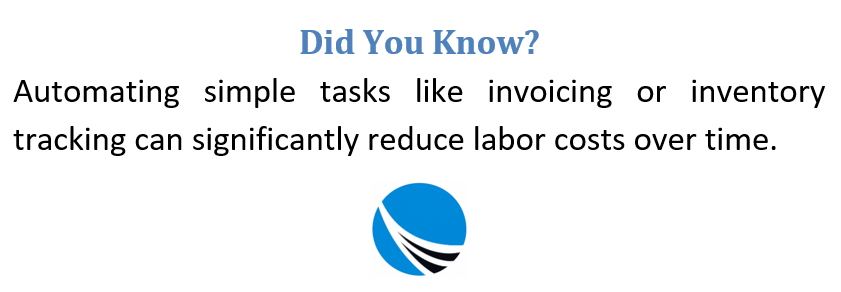Navigating unpredictable shifts in the economy is part of every business owner’s journey. Prices for supplies, rent, labor, and fuel often fluctuate beyond your control. As these rising costs begin to squeeze your margins, it becomes essential to adapt. Fortunately, there are practical and creative strategies to ease the pressure and protect your profitability.

Adjust Pricing Thoughtfully
One of the most effective ways to deal with increased operating costs is to revise your pricing structure. Many customers are willing to accept moderate price increases—especially when they value your product or service. If your industry is highly competitive or price-sensitive, consider applying small increases to less critical offerings first, where the impact on demand is minimal.
Pay attention to how your competitors respond to the same challenges. Most are likely facing similar cost increases, and price adjustments across the board may become standard in your market. The key is to be transparent with customers and focus on value—explain why the increase is necessary and highlight any improvements in service or quality.
Reevaluate Supplier Agreements
Take a fresh look at your current suppliers. There may be room to renegotiate contracts, ask for better terms, or explore discounts for larger or longer-term orders. Comparing offers from new vendors could also uncover better pricing, especially if your purchasing habits have changed with business growth.
In some cases, you might want to secure prices through long-term agreements to avoid being at the mercy of volatile market costs. Items like software, equipment leases, or recurring services can often be locked in at more favorable rates with the right negotiation.
Use Technology to Lower Operational Costs
One of the most overlooked ways to control rising costs is automation. Manual processes often consume more time and require more staff than necessary. From managing appointments to processing payroll or tracking stock levels, there are software solutions that can streamline operations and cut down administrative overhead.
By reducing human intervention in routine tasks, you free up staff to focus on more valuable, revenue-generating activities. This improves efficiency and allows your business to do more with less.
Buy in Bulk When It Makes Sense
If you have enough capital and storage space, consider purchasing frequently used materials or goods in larger quantities. Bulk buying often comes with substantial discounts, which can help cushion the impact of inflation. However, ensure that items won’t expire or become obsolete before you use them.
To maximize this strategy, track your usage history and project future needs accurately. This ensures you don’t tie up cash in inventory that just sits on shelves.
Speed Up Incoming Cash
When money comes in quickly, your business can respond to challenges with greater agility. Make it a priority to invoice immediately upon completing a job, or better yet, encourage instant payment through digital means.
For long-term projects, consider asking for staged payments tied to progress milestones. This helps you maintain cash flow throughout the contract period and reduces your financial exposure if clients delay final payments.
Reduce Facility and Energy Costs
If your team doesn’t need to be physically present all the time, offering part-time remote work may help you cut down on workspace requirements. With fewer people in the office, you could downsize to a smaller space or reduce your utility bills.
Energy-saving measures, such as LED lighting, timed switches, and better insulation, also contribute to long-term cost reductions. Make resource conservation part of your company culture, and employees will be more mindful about reducing waste and unnecessary usage.
Tap Into Group Discounts
Being a member of professional associations, trade networks, or chambers of commerce can offer unexpected savings. These organizations often negotiate deals on behalf of members for everything from insurance to office supplies to travel accommodations.
Explore what’s available through any industry group you belong to—you might be able to shave off some costs simply by accessing these group benefits.
Reassess and Eliminate Unnecessary Costs
Sometimes the most effective approach is to step back and trim the fat. Pull up your cash flow reports and go through each expense line by line. Identify services, subscriptions, or recurring costs that no longer serve a critical purpose. Even small reductions across several areas can result in substantial savings.
Advertising is another area worth scrutinizing. While it’s important to market your business, you should measure whether your current efforts are generating real results. Cut back on campaigns that look good but don’t contribute to revenue.
Review Your Product Mix
It’s possible that some of your offerings are underperforming or even operating at a loss. Review each product or service line by breaking down direct costs, overhead, and profitability. This might reveal that some services are dragging your business down.
Consider streamlining your offerings to focus only on those that consistently generate profit. This allows you to direct energy and resources where they’re most effective.
Save on Labor Without Sacrificing Team Morale
Labor costs are often one of the largest expenses. While layoffs should be a last resort, there are ways to reduce costs without cutting jobs. These may include reducing overtime, shortening workweeks, or temporarily freezing new hires. You can also cross-train staff to take on multiple roles, increasing flexibility within a leaner team.
If downsizing is truly necessary, ensure you follow legal and ethical processes. Communicate clearly with employees, provide support, and maintain transparency to protect your company’s reputation.
Delay Major Purchases if Necessary
Postpone buying expensive equipment or technology upgrades if they’re not urgent. Repairing or refurbishing existing assets might be a more cost-effective alternative. If an item is essential but too expensive upfront, look into lease options or financing plans that won’t drain your immediate resources.
Timing is key—wait until your cash position is stronger or until supplier deals improve before moving forward.
Get Help From a Tax Advisor
A good tax professional can help uncover legitimate deductions and restructuring options that reduce your overall liabilities. They’ll identify areas where you’re overspending and ensure that your business structure is working in your favor.
Making the most of tax strategies can provide breathing room and reduce financial pressure during inflationary periods.
Final Reflections
Business expenses won’t always stay the same. As prices rise, your response can make all the difference in how your company weathers the storm. With thoughtful planning, regular financial reviews, and a willingness to adapt, you can keep your operations healthy—even in challenging times.
Being flexible, forward-thinking, and cost-conscious allows you to not only survive cost increases but emerge more efficient and focused than before.

FAQs about Business Expenses
How can small businesses handle rising expenses without losing customers?
By adjusting prices gradually and strategically—especially on non-essential products—businesses can maintain customer trust while covering increasing costs.
What’s a practical way to reduce everyday operational expenses?
Automating routine tasks like payroll, invoicing, and inventory tracking helps cut labor costs and improves efficiency without sacrificing quality.
Are there quick wins for improving cash flow?
Yes, invoicing immediately after work is done and offering online or upfront payments can accelerate incoming cash and ease financial strain.
How can businesses lower costs without affecting staff morale?
Instead of layoffs, companies can explore flexible work arrangements, reduce overtime, and cross-train staff to maximize existing talent.
Should big purchases be delayed during uncertain times?
Absolutely—if it’s not urgent, postponing or repairing equipment can help conserve cash and avoid unnecessary debt.
